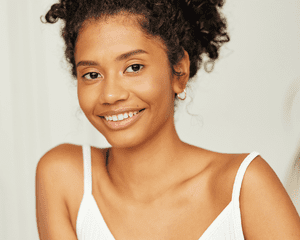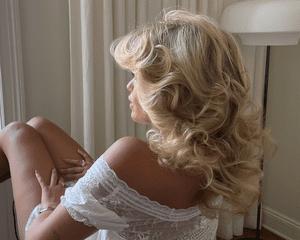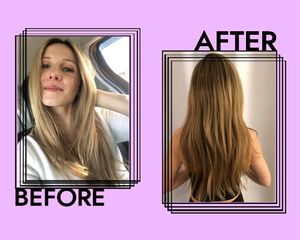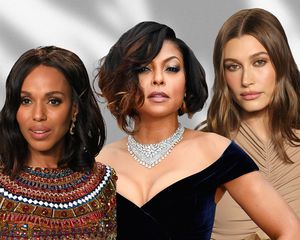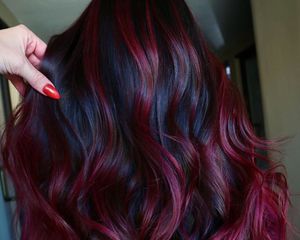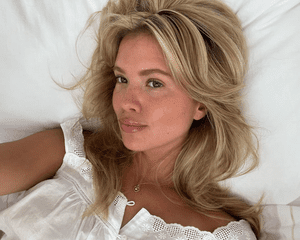:max_bytes(150000):strip_icc()/hair-color-771473512d574f12af6f4c28a5ba26ea.jpg)
Lyuba Burakova / Stocksy / Byrdie
Colorful hair dye is a fun and expressive way to turn your hair from basic to a work of art. Whether it be inspired by your favorite 2000s pop-punk artist, or simply a vision from the heart, colorful hair is fun, festive, and fabulous.
On the not-so-fun side of colorful hair dye is the removal process, which can often be difficult pending specific factors. "The cool and darker colors definitely stay longer," colorist Shelley Gregory shares. "The dye molecules in the cooler colors vs the warmer colors are actually larger, so they have more staying power and less fading happening. That is one of the reasons I love the pastels, because I know it will fade into the blonde that I created underneath so I can change someone’s hair to a different pastel each salon visit."
Meet the Expert
- Shelley Gregory is a Kérastase Global Pro Club Color Expert.
- Kevin Kelly is a celebrity hair stylist and owner of Kevin Kelly Salon in New Jersey.
As for which specific colors are the most difficult, celebrity hairstylist Kevin Kelly says his top three are blue, green, and red. So, how does one take on the removal process safely and successfully? We turned to the pros to find out. Ahead, experts share how to remove colorful hair dye.
Skip The At-Home Removal
First thing's first: If there is one thing to consistently avoid, it's the concept of doing any color removing yourself at home.
"I do not recommend removing without a professional," Gregory emphasizes. "As a pro, we can assess your hair’s porosity and plan out the way to not only remove the color but also the aftercare for it. Sometimes we can even remove the color and do a gloss or toner to enhance what you have left over in your hair. Then we can see you home with diagnosed hair cares routines to make sure you are really giving your hair the best love it needs after a color correction.
"For overall hair color care, I recommend the Kérastase Chroma Absolu collection because it helps to preserve the integrity of the hair and hair color post treatment," Gregory shares.
Bleach Wash
For stubborn remnants of colors, the experts recommend a bleach wash (sometimes known as a French fluff). "This is a quick way to remove left over pigments by mixing two parts bleach to one part shampoo," says Gregory. "Apply the mixture onto wet clean hair at shampoo bowl and watch to rinse as soon as desired level or removal is achieved."
It's important to note the potential damages of bleach to hair during this or any bleach-related process. Scalp burns, damage and breakage to the hair, yellow coloring, as well as a pungent smell were all studied effects of applying bleach to hair.
Sulfate Shampoo and Baking Soda
"I wouldn’t recommend doing any of this at home as far as shampoo with sulfates go," Kelly notes off the jump about this next tip. However, logistically, the combination of the two will help contribute to the color removal from hair.
"Sulfates strip the color, so when you use a shampoo with it, it will start to make the color oxidize and slip from the cuticle," Kelly continues. "You can start by mixing sulfate shampoo and baking soda together and letting it sit, but most of the time, you need bleach to remove at a lower volume because the hair is already processed under the color and the bleach will lift it out."
Clarifying Shampoo
Clarifying shampoo is formulated to move unwanted buildup on your hair, typically caused by products such as gels, hairspray, mousses as well as shampoo and conditioner over time. "A good clarifying shampoo and hot water will help color to fade overtime," says Gregory.
Color Eraser
While Kelly does not recommend this as a solution, he notes that this tip can help begin the color fading process: "The only formal color remover I would recommend would be a color remover, which they call a color eraser," Kelly says. "It doesn’t always get all the color out, so your second option would be bleach."
Sunshine
This method is rather simple, and is in fact, a DIY. While the experts advise to stay away from the old lemon-water lightening method as a typical tactic, Gregory shares, "sunshine is not ideal, but it will fade any and all colors from hair overtime."
Next time you're in the market for a ROYGBIV hair change, remember these tips and tricks to avoid any surprise issues down the line.



